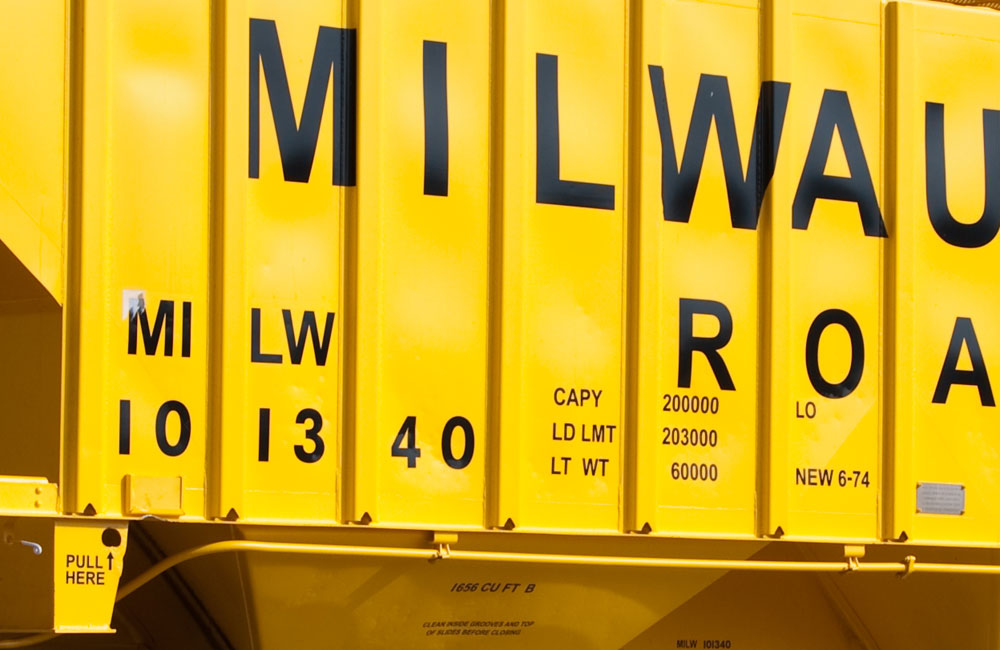
Q: What does all that freight car lettering mean? For example, I have noticed build or rebuild dates and brake information. – Jack Pfleeger
A: There’s a lot of variation in freight car lettering. It can depend on the type of car, the car’s owner, and the era, since regulations and practices changed over the years. But there are some things that are pretty common.
The Federal Railroad Administration (FRA) requires very little when it comes to car markings. All freight cars must bear the reporting marks of the car owner and a car number unique in that owner’s roster. These must be stenciled prominently on both sides of the car in letters no less than 7 inches high, although 9 inches is more prevalent these days. Although common practice is to center these above the truck on the observer’s left, they can be placed elsewhere on the car body if necessary; for example, automobile boxcars with large double doors might have their reporting marks and car number on the right so they aren’t obscured when the doors are opened. The only other lettering required on all cars by the FRA is the car’s built-on date (BLT), which must be included in letters at least one inch high. There are more FRA regulations for maintenance-of-way cars, tank cars that can carry hazardous lading, and other specific car types. In addition to the BLT date, some railroads add the date a car was rebuilt (REBLT).
The next most common markings you’ll see on a freight car is its capacity. This data includes the car’s weight empty (LT WT) and maximum load it can safely carry (LD LMT). Add those two and you get the car’s maximum wheel-on-rail weight. Older cars also list the weight the car is designed to carry (CAPY), which is less than the LD LMT. This is no longer required. A new car that’s not been reweighed since it was built will often bear the label NEW and the built-on date; cars that have been reweighed since then will have a reweigh date accompanied by a code saying which car shop performed the test.
You’ll often see dimensional data on freight cars, too. This will usually include at least the car body’s external width and height (EW and H) and its extreme height and width (EXW and H), which includes things that stick out from the car’s side like ladders, grab irons, and door tracks. Boxcars and hoppers will have some internal dimensions, as well, such as IL, IW, IH, and volume in cubic feet (CU FT).
Other markings were added in modern times. The Clean, Oil, Test Stencil (COTS) panel, a black-and-white rectangle with multiple panes, is used to track information about the car’s brake system and wheel bearings, as well as when and where they were last serviced. The KarTrak Automatic Car Identification label, a vertical black rectangle with 13 different colored horizontal stripes, was designed to be read by automated trackside devices. It was mandated by the Association of American Railroads (AAR) starting in 1967, but was abandoned in 1977 because of problems reading dirty, worn, or damaged labels.
Optional information that was stenciled on freight cars in different eras includes codes telling which shop built the car; load-securing equipment the car is equipped with; special handling and safety instructions; directions about where to return the car when empty; clearance information (such as Plate C, E, or F); excess height warnings; and much, much more. For more information about freight car markings, download the National Model Railroad Association’s helpful Data Sheet D5e.
Send us your questions
Have a question about modeling, operation, or prototype railroads? Send it to us at AskTrains@Trains.com. Be sure to put “Ask MR” in the subject.













